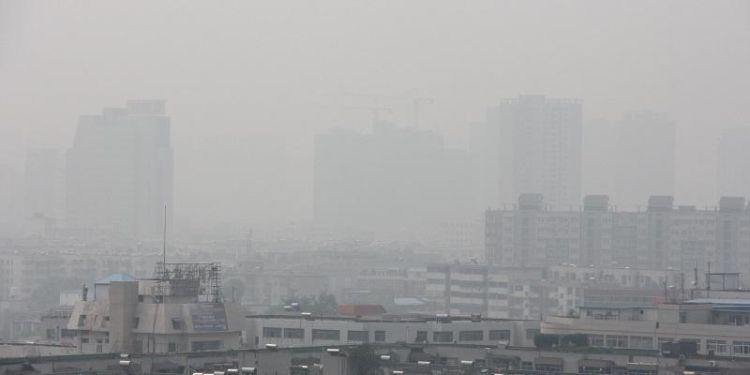Lockdown in China saw only a modest drop air pollution

The two pollutants most harmful to human health, PM2.5 and Ozone, were only slightly reduced or barely affected during the lockdown in China, according to a new study.
The University of Leeds and the Southern University of Science and Technology in Shenzhen, China have undertaken a detailed analysis of key pollutant concentrations from January 2015 to April 2020 to isolate the changes during the lockdown period
Large improvements of air quality in China during the lockdown have been widely reported, however, the study’s findings reveal PM2.5 – fine particles measuring less than 2.5 µm – had a modest reduction of 11% across China, and was not reduced in north-east China.
While concentrations of Nitrogen Dioxide (NO2) did show improvements with a 27% decrease across China during the lockdown, the study found almost no change in Ozone concentrations.
Understanding trends in air quality is essential to assess the effectiveness of recent air quality measures and help inform future air pollution mitigation.
Lead author Ben Silver, from the University of Leeds, said: “The largest reductions of NO2 were in Hubei province, where NO2 concentrations were over 50% lower during the lockdown.
“Much smaller reductions were observed for other pollutants. PM2.5 particles had only a modest reduction and are the most harmful constituent of air pollution, as they travel deep into the lungs and bloodstream and damage the lungs and heart.
“Ozone can irritate breathing, affect lung function and worsen lung conditions such as asthma. We found almost no change in ozone concentrations because of the pandemic control measures.”
Isolating the impact of lockdown
Understanding the impacts of COVID-19 control measures on air quality has been complicated by several compounding factors, including the Lunar New Year, which has a well-documented impact on air pollution in China and the rapidly changing air quality in China during recent years.
The study, published in the journal Environmental Research Letters, analysed five years of data from 1,600 air quality-monitoring stations in China to isolate the impact of the lockdown on air quality. The study controlled for and quantified the inter-annual trend, seasonal variation and effect of Lunar New Year on air quality in each province and city across China.
To understand the impact of the control measures during the COVID-19 outbreak, the researchers compared pollutant concentrations in 2020 with expected concentrations had the COVID-19 outbreak not occurred.
Senior author Professor Dominick Spracklen, from the University of Leeds, said: “Although China’s air quality has improved in recent years, indoor and outdoor air pollution still has serious health impacts, with 12% of deaths in China in 2017 attributable to it.
“Understanding trends in air quality is therefore essential to assess the effectiveness of recent air quality measures and help inform future air pollution mitigation. The application of control measures during the COVID-19 outbreak enabled us to analyse the potential air quality improvements resulting from a reduction in emissions.”
Air quality in China
Co-author Xinyue He, from the Southern University of Science and Technology, Shenzen, China, said: “Chinese NOx (nitrogen oxide) emissions are dominated by transport (35 per cent), industry (35 per cent), and power generation (19 per cent), all of which are likely to have been affected by the lockdown.
“Reduction in emissions from these dominant sectors and short lifetime explain the larger reduction in NO2 compared to other pollutants.
“PM2.5 concentrations in China are heavily influenced by residential emissions, which are likely to have been less affected by the control measures. The larger relative reductions in PM10 and CO (carbon monoxide) compared to PM2.5, may be due to a greater reduction in primary emission sources and the greater contribution of secondary aerosol to PM2.5.
"Reductions in emissions of volatile organic compounds and NOx, combined with changes in PM concentrations, resulted in little overall change in ozone concentrations.”
Professor Spracklen added: “The modest improvement in air quality during the lockdown, despite very large reductions in emissions from some sources such as traffic, highlights the challenge facing China as it tries to further improve air quality.
"Our study provides insight into the effects of future emission reductions and can help inform development of effective air pollution mitigation strategies.”
Further information:
Image: Zhengzhou, China. Credit: V.T. Polywoda
The paper The impact of COVID-19 control measures on air quality in China is published in Environmental Research Letters 28 July 2020.




